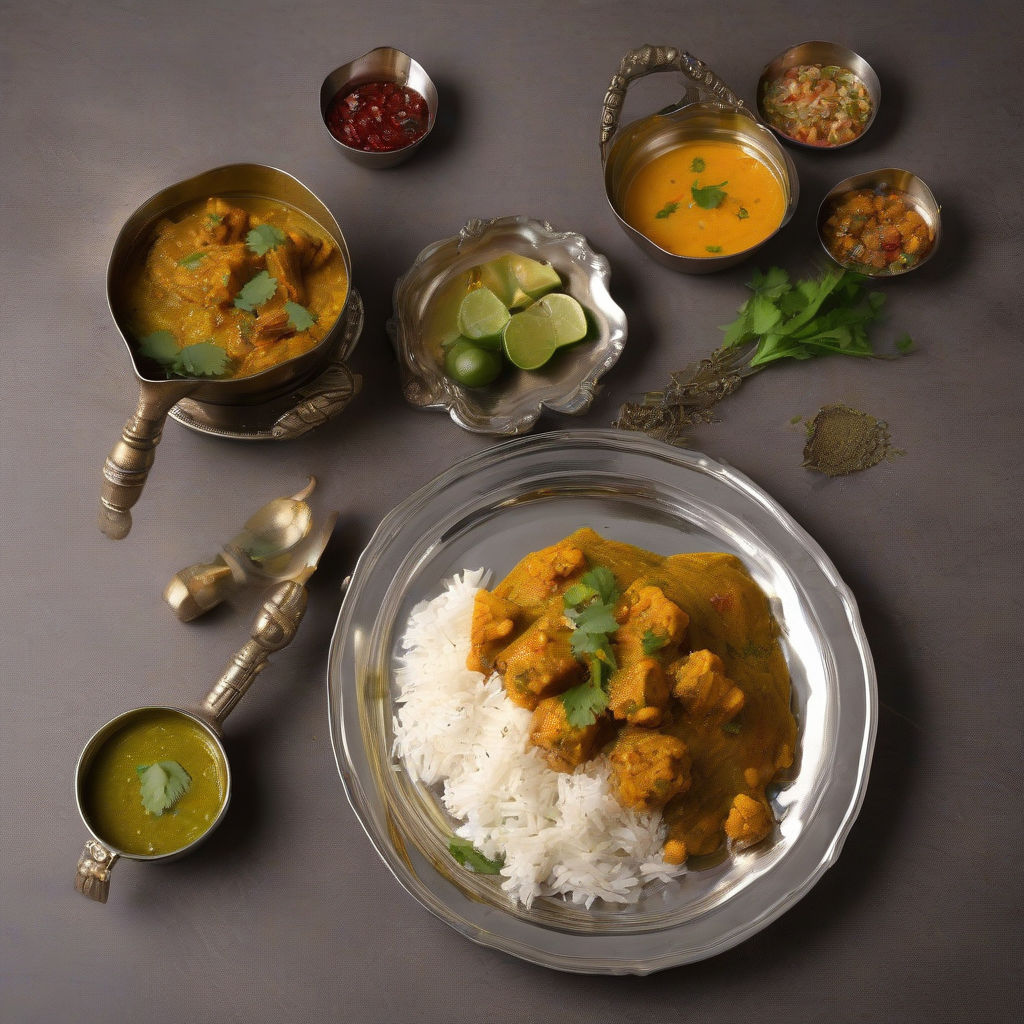Aye Mere Deshwasiyon! Let’s Make Some Jhur Sideh, Shall We?
Namaste, Kem Chho, and Sat Sri Akal, my foodie friends! Chef Curry Do’pyaza here, back in your kitchens and hearts with another delicious dish. Today, we’re diving headfirst into the vibrant world of Jhur Sideh, a simple yet soul-satisfying dish hailing from the beautiful lands of Bihar and Jharkhand.
This dish is more than just food; it’s a warm hug on a cold day, a taste of home, and a celebration of simple ingredients.
When Do We Feast on Jhur Sideh?
Jhur Sideh is a staple in many Bihari and Jharkhandi homes, especially during the cooler months. Think of it as the perfect comfort food during Diwali celebrations, Chhath Puja festivities, or even just a regular weeknight when you crave something warm and nourishing. It is also enjoyed during Makar Sankranti, when the harvest season is celebrated. It’s the kind of dish that grandmothers lovingly prepare for their families, passing down generations of culinary wisdom.
A Little History Lesson (Spice Included!)
Jhur Sideh, like many traditional Indian dishes, has humble origins. It was born out of necessity, using readily available ingredients and simple cooking techniques. It’s a testament to the resourcefulness of our ancestors, who could create magic with minimal resources. Over time, each family has added their own special touch, making Jhur Sideh a dish with countless variations.
Let’s Get Cooking!
Preparation Time: 15 minutes
Cooking Time: 30 minutes
Ingredients You’ll Need (The List of Goodness):
- 1 cup Chawal (Rice) – preferably a short-grain variety like Gobindobhog
- 1/2 cup Moong Dal (Split Yellow Lentils)
- 4 cups Pani (Water)
- 1 teaspoon Haldi Powder (Turmeric Powder)
- 1/2 teaspoon Lal Mirch Powder (Red Chili Powder) – adjust to your spice preference
- 1/2 teaspoon Jeera (Cumin Seeds)
- 1/4 teaspoon Hing (Asafoetida)
- 1 tablespoon Ghee (Clarified Butter)
- Swadanusar Namak (Salt) – to taste
- 2 tablespoons Hara Dhaniya (Fresh Coriander Leaves) – chopped, for garnish
Step-by-Step Cooking Instructions (Easy Peasy!):
- Wash and Soak: Gently wash the rice and moong dal together until the water runs clear. Soak them in water for about 15-20 minutes. This helps them cook faster and become wonderfully soft.
- The Tadka Magic: In a pot or pressure cooker, heat the ghee over medium heat. Add the jeera and hing. Let them sizzle and release their fragrant aromas.
- Spice It Up: Add the haldi powder and lal mirch powder. Sauté for a few seconds, being careful not to burn the spices.
- Combine and Cook: Drain the rice and dal and add them to the pot. Stir well to coat them with the spices.
- Add Water and Salt: Pour in the water and add salt to taste. Bring the mixture to a boil.
- Simmer and Cook: Reduce the heat to low, cover the pot, and let it simmer for about 25-30 minutes, or until the rice and dal are cooked through and have a porridge-like consistency. Stir occasionally to prevent sticking. If using a pressure cooker, cook for 2-3 whistles on medium heat.
- Garnish and Serve: Once cooked, garnish with fresh hara dhaniya. Serve hot and enjoy!
Chef Curry’s Top Tips for a Perfect Jhur Sideh:
- Ghee is Key: Don’t skimp on the ghee! It adds a rich, nutty flavor that elevates the dish.
- Spice Level: Adjust the amount of lal mirch powder according to your preference. If you like it milder, use less. If you like it fiery, go for it!
- Consistency is King: The ideal consistency of Jhur Sideh is somewhere between a porridge and a thick soup. Add more water if needed to achieve your desired consistency.
- Roasting the Dal: For a nuttier flavour, dry roast the moong dal for a few minutes before washing and soaking.
Cooking It Your Way: Different Methods for Different Folks
- Gas Stove: Follow the instructions above using a pot on your gas stove.
- Induction Stove: The same method as the gas stove applies.
- Pressure Cooker: This is the quickest method. Cook for 2-3 whistles on medium heat.
- Slow Cooker/Crockpot: Combine all ingredients in the slow cooker, set to low, and cook for 4-6 hours.
- Microwave: Not recommended as it can be difficult to achieve the desired consistency.
Nutritional Information (A Little Something Extra):
Jhur Sideh is a good source of carbohydrates, protein, and fiber. It’s also relatively low in fat, making it a healthy and nutritious meal. Of course, the exact nutritional content will vary depending on the ingredients used and the portion size.
Serving Suggestions (How to Enjoy Your Masterpiece):
- Serve hot with a dollop of ghee on top.
- Pair it with a side of achaar (Indian pickle) or papad (thin, crispy flatbread).
- Enjoy it as a light lunch or a comforting dinner.
- It is a great dish for babies and young children.
A Humble Request from Your Chef:
Now, my dear readers, it’s your turn! Head to your kitchen, gather your ingredients, and try this wonderful Jhur Sideh recipe. I know you’ll love it! Share it with your friends and family, and let them experience the magic of Bihari and Jharkhandi cuisine.
Happy cooking, and until next time, stay spicy!
